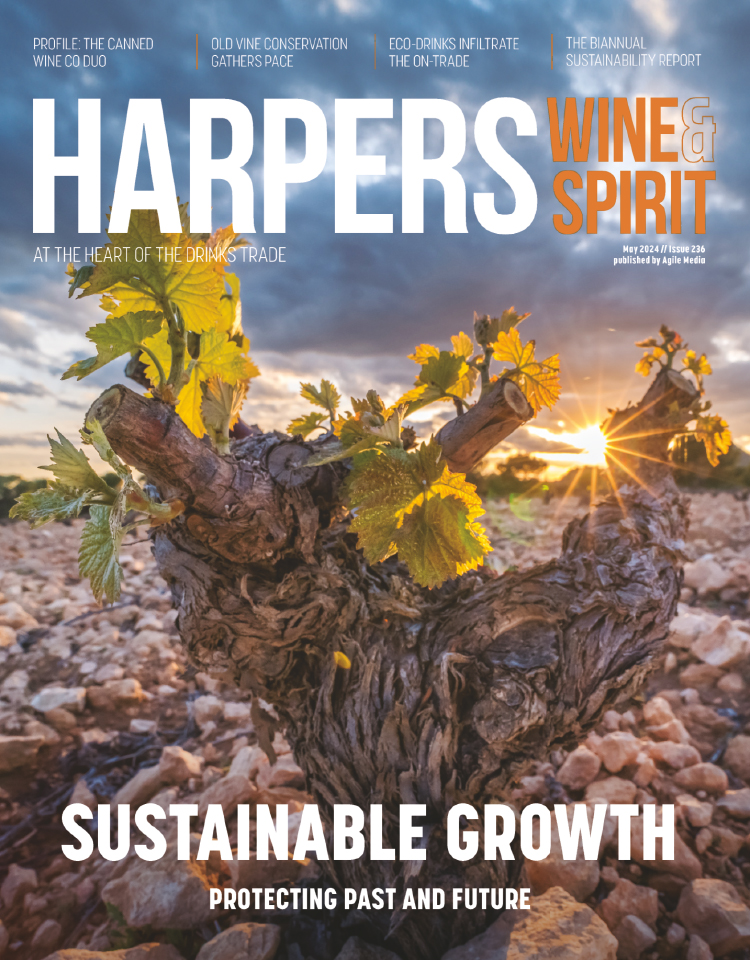
Long Read: A new script for wine writing
The Zoom option meant this year’s Symposium for Professional Wine Writers organised by Meadowood in Napa, California, attracted its largest number of attendees: 303. Typically about 24 have attended in person since the symposium launched in 2004.
Journalists came from Canada, Hong Kong, Japan, the UK, Italy, New Zealand, Lebanon, South Africa and Australia as well as the US.
Organisers dedicated this year’s event, which ran 10 to 12 May, to Steven Spurrier who held “a special place in the hearts of many, especially in Napa Valley”, interim director Sarah Bray said. Spurrier, of course, was the focus of the movie Bottleshock about the Judgement of Paris tasting he organised, which famously helped put California on the fine wine map.
A feature this year was the number of speakers from groups under-represented among wine writers and consumers. Of the 35 speakers, 27 were women, and 12 came from the BIPOC (Black, Indigenous and People of Colour) community.
Bray said organisers had sought to highlight “as many new voices as possible”. Last year Napa Valley Vintners outlined a commitment to increased diversity and inclusion. Details can be found here.
“When the gatekeepers are diverse, so too are the stories, its tellers and their experiences,” Bray added in her concluding remarks. “This diversity accelerates our collective knowledge and empathy.”
The opening keynote speaker, Stephen Satterfield, founded Whetstone, a media company dedicated to the story of food. Satterfield described himself as a social entrepreneur using wine as a catalyst for socio-economic development for black wine workers in South Africa.
Jancis Robinson MW, keynote speaker on the second day, observed the way wine writing had evolved and how she had moved with and observed changes over time. During the Q&A I asked Robinson what she believed was the future for paid wine writing, given the number of people who wrote for free.
“I wish I could be more optimistic [for print],” she said, before discussing other ways that journalists could make a living, such as her website.
A high number of wine journalists write for free in America, I concluded based on comments in the chat function. When asked ‘why?’, most said “for the exposure”. Elaine Chukan Brown, who moderated the Beyond the Written Word session, commented: “I come from Alaska. For me exposure means you freeze to death.”
Bray said having clips to share was important and writing for free “can be a way to get a foot in the door”. It was a fine balance, she said. “I think what we [will] see more of is a hybrid writer and other job, whether marketer or tech executive, given how few full-time jobs exist in editorial these days.”
Felicity Carter, former editor-in-chief of Meininger’s Wine Business magazine, gave the concluding keynote, and challenged journalists to explore options in a globally connected world.
When asked about the future, she said that to understand trends and where the market was going “look to the capital cities of Sweden and Denmark”. This was because the Scandinavian nations tended to be the most aware of global changes and sommeliers there really understood trends.
Earlier this year Carter was appointed executive editor of a new project called Pix, described as “a better way to find and buy wine”. Carter said Pix was being funded by the industry. “We have dozens of funders, because everybody wants to see a service like this happen, especially as we won't be charging anybody to use it.”
Noted wine journalists who spoke included Reva Singh, owner of Sommelier India magazine; Jeannie Cho Lee MW, founding publisher of Le Pan Media in Hong Kong; Wanda Mann, East Coast editor of The SOMM Journal; Amy Wislocki, editor of Decanter magazine; Dorothy Gaiter, who co-wrote The Wall Street Journal’s wine column “Tastings” from 1998 to 2010 and Eric Asimov, chief wine critic of The New York Times.
Hoby Wedler PhD, who has been blind since birth, also gave an inspired talk about the sensory aspects of wine. In 2011 he developed the Tasting in the Dark program, a blind-fold wine experience, in collaboration with the Francis Ford Coppola Winery.
Speakers from the travel industry suggested opportunities might exist in a combined role. They were Pavia Rosati, founder of Fathom, the travel website; Julia Cosgrove, editor-in-chief of AFAR, the travel media brand and Kristin Braswell, the entrepreneur behind the Crush Global Travel website.
Another panel looked at non-print possibilities for wine journalism. Speakers included Nadine Nettmann, editorial director of SOMM TV and Sukari Bowman, creator of "The Color of Wine" podcast.
London journalist Adam Lechmere has attended the symposium in California twice, as well as being a speaker this year. He said it was always an excellent forum which avoided navel gazing by attracting the world's most experienced wine journalists, and it had “taken well to virtuality”.
A hybrid event was being discussed for next year, Bray said, because “the power and reach of the online format was not lost on us”.
Five key ‘takeaways’ for aspiring writers from the session
• When pitching stories, ask and answer the question: Why am I the best person to tell this story?
• Then ask yourself why should I write the story now? Is it or can it be made topical?
• Talk to lots of people to get a wide range of opinions. No single-interview stories.
• Focus on storytelling rather than the technical aspects of wine.
• Can I provide images and other things that will enhance the story?
Keywords:
- wine
- new
- UK
- US
- Fine Wine
- Napa
- year
- Wine Writers
- speakers
- organisers
- spurrier
- writers
- wine map
- BIPOC
- organised
- bray
- among wine
- represented among
- interim director sarah
- director sarah bray
- fine wine map
- among wine writers
- represented among wine





